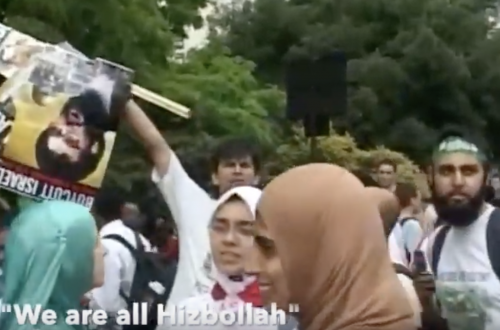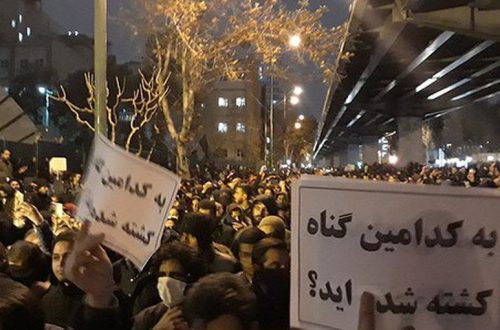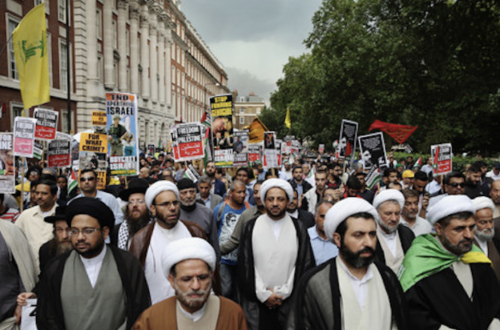This is a cross post by raincoatoptimism
The pop philosopher Slavoj Zizek, around the time of the 2009 elections in Iran, asserted that the Revolutionary Guard was not some working class militia but like a mega-corporation. Too, Zizek’s refusal to talk up the reformer candidate Mir-Hossein Mousavi earned him much criticism from Ahmadinejad’s critics – but his criticism was mostly misunderstood. In Mousavi was not a radical who would solve the socio-economic problems Ahmadinejad presided over, but someone who would restore status quo, praised by the legions of mostly Middle Class supporters who took to the streets in what became known as the Velvet Revolution.
What Iran needed, rather, was somebody to tackle the social inequality prevalent in society. The worry that Mousavi was too Westernised was misjudged too – to the confusion of many, Iran is already rather Westernised, perhaps more so than the West would like to admit. President Ahmadinejad has before qualified the term “full liberal democracy” to Iran despite calls the 2009 election was rigged (though as was the case with Bush in 2004, suspicions of election rigging is not limited to non-democratic countries), while Saeed Rahnema, Professor of Political science at York University in Toronto, has pointed out that Iran has a ruling elite who are said to be “market-oriented capitalists”.
Further still Heydari Kord-Zanganeh, head of the state-run Privatisation Organisation Gholam Reza, delightedly announced in 2009 that “We have privatised $63-billion worth of government assets since 2005,” noting the goal of ridding billions more assets. What passes as Western has already been captured in today’s Iran.
In his wonderful book The Ayatollah’s Democracy: An Iranian Challenge, Hooman Majd – Iranian by stock, now living and working in New York – chronicles other measures Ahmadinejad has taken, cynically speaking, to give the appearance Iran is a free and open society, deserving of its independence and dismissal of foreign interference. On October 29, 2009, the Supreme Leader addressed an audience of students at Sharif University, Tehran. During an opportunity for the audience to speak a student, one Mahmoud Vahidnia, launched into a tirade, subsequently receiving press attention and even making it on to the Supreme Leader’s own website. Such openness has caused many to assume he was planted, to show illusions of free speech at a time when Iran was conscious the world’s eyes were upon them.
Others felt such a move to be too sophisticated of the Iranian propaganda department, instead – and so much like the US – it has its own way to curb dissent in a way which doesn’t tend to upset the masses. While radicalism is no longer actively prohibited in America (gone are the days of McCarthyism) the American mainstream press acts like what Majd calls the “genteel and more subtler … version of Iran’s Guardian Council” (p.123).
Majd notes that the Iranian people are almost instinctively conspiratorial – something he implies throughout was absent in his own journalistic accounts of the run up to election 2009. He scoffed at notions that he was being followed, along with his friend Mohammed Khatami, son of reformist leader of the same name – while they were lunching together in the Yazd province, and laughed off opinions of Ahmadinejad’s “resurgent authoritarianism”. But today he takes these views a little more seriously, particularly as so many people were imprisoned for “treason” after flocking to the streets.
When the author discussed his book last year at the LSE he was introduced as someone who “travels back and forth quite freely to Iran” to which he quickly replied “so far,” before explaining he hasn’t been back since the election so he hasn’t had a chance to test whether he’s able to travel as freely as he used to. Given that in the book he describes Ahmadinejad as a “sitcom” (p.41) and “educated but unsophisticated” (p.163) his caution may be well-advised.
Unsurprisingly Majd’s book centres around the events leading up to the disputed election, and how encouraging, it was to see young people display such overt interest in national political matters. But clearly he is addressing an audience largely ignorant of Iranian culture (indeed he admits as much, referring to some American audiences who have just assumed Iran is a rogue dictatorship). His recalling Ahmadinejad’s more authoritarian features, for example, must not be an indictment on the nature of Iranian people. It is too simple to say the President is a fascist and the people beneath him sheep. A great example of this comes from Majd’s visit to the Yousefabd synagogue in Iran, then to the Dr Sapir Hospital to visit Dr Siamak Moreh-Sedegh, President of Tehran Jewish Committee. Despite government sponsorship of anti-Semitic conferences and Ahmadinejad’s own holocaust denial, Dr Moreh-Sedegh told Majd “anti-semitism can only thrive if there are roots. And there simply are no roots in Iran … we’re not in the least bit afraid of anti-Semitism in Iran”. (p.237).
The current regime in Iran may harbour unpardonable features, but the Iranian people are largely resistant to this and it says a lot about a nation, and the limits its government has in being able to control and dominate them.
Ahmadinejad may use rhetoric about the Islamic Republic to his advantage, but the Iranian revolution is the people’s and they know it. For this reason the rise of the green movement perhaps shouldn’t surprise us; what was a surprise was how the government reacted – this in turn marks a shift back to the days where leaders told Iranians what to do; the Ayatollah’s democracy. But if history is any judge this cannot last. Majd’s book serves not only to show the tragedy of Ahmadinejad, but to inform his audience that it’s not in the Iranian DNA (at least since the revolution) to be told “what is true”, or “what is forbidden”, and to warn the sitting government to do this at its peril.


